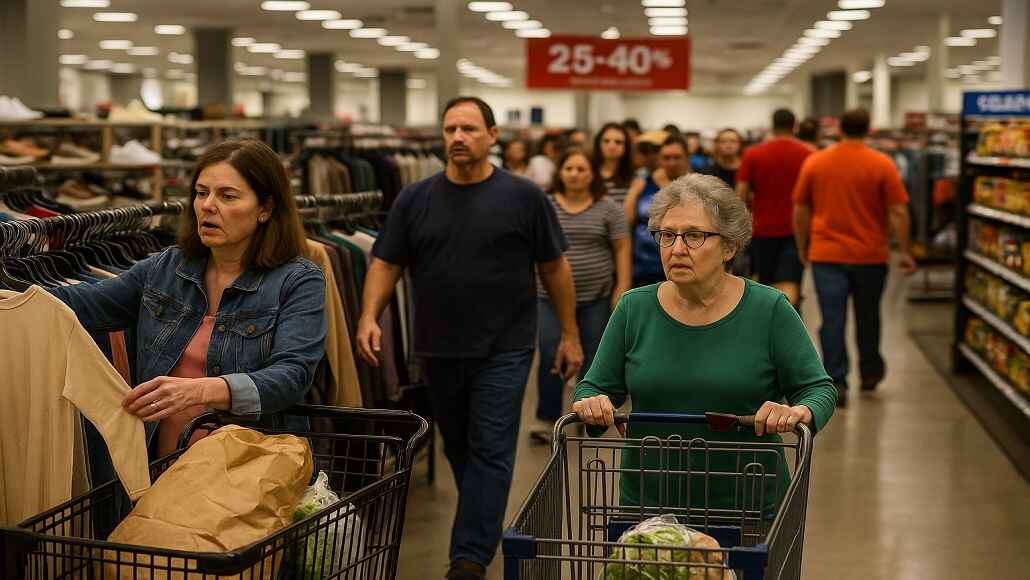Consumers in the U.S. are swiftly altering their shopping habits amid increasing concerns about impending tariffs. A recent report highlights a notable fluctuation in store visits across various retail categories, with a spike followed by a decline and another surge between late March and mid-April.
During the week ending March 23, retail categories such as clothing, superstores, shoe stores, and department stores all saw significant year-over-year (YoY) gains in foot traffic. This increase is largely attributed to shoppers rushing to secure pre-tariff prices, especially for items commonly imported from abroad, according to a Pass_by report.
In that week, visits to clothing stores rose by 6.20%, shoe stores increased by 4.36%, and superstores saw a 4.27% uptick, indicating consumer concerns over potential duty increases on apparel, footwear, and household essentials.
However, just a week later, in the closing days of March, foot traffic plummeted in many of these categories. Clothing visits dropped by 4.20%, and shoe store traffic fell by 9.49%.
The first week of April displayed a more measured pace, with superstores, clothing, and electronics experiencing slight declines. In contrast, grocery and liquor stores recorded modest gains. This trend suggests that while shoppers remained cautious about non-essential purchases, demand for staple items remained steady. It’s possible that some consumers were waiting for more information regarding which products would be most affected and the timing of any tariff increases, the report noted.
As of April 13, foot traffic rebounded across several retail categories in the U.S. Clothing store visits increased by 4.78%, grocery stores saw a 6.95% rise, and shoe stores reported a 4.03% uptick, demonstrating a strong resurgence in consumer activity amidst ongoing tariff worries. Shoppers react to tariff concerns, leading to increased visits in essential categories.
Many items in apparel, footwear, and specialty goods are sourced globally, leading to a wave of preemptive bulk buying as shoppers aim to avoid anticipated price increases. The uncertainty surrounding the implementation of tariffs adds to the volatility; after initial panic buying, many consumers paused their spending until more clarity on policy details emerged, resulting in sharp week-to-week fluctuations in foot traffic, according to the data.
Retailers are contributing to this cycle by initiating flash sales and time-limited promotions in response to tariff-related news, causing temporary spikes in visits that often decline just as quickly once the promotions conclude.
“This isn’t just about inflation anymore—consumers are clearly reacting to tariff headlines by buying what they fear will soon become more expensive or harder to find,” said James Ewen, vice president of Marketing at Pass_by. “It is rare to see such coordinated spikes across essentials, apparel, and specialty food in one week.” Shoppers react to tariff concerns, indicating a significant shift in consumer behavior in response to economic pressures.



































